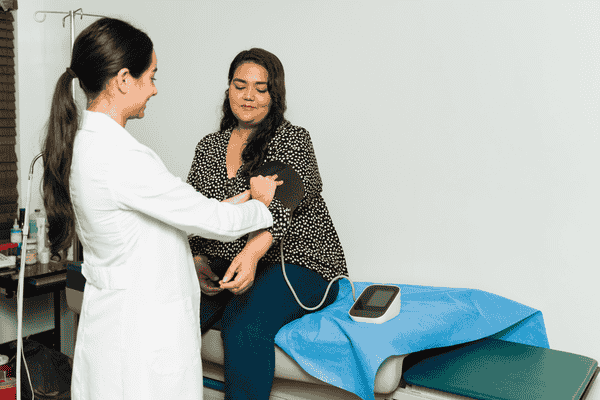Introduction: A New Chapter in Robert’s Life
At 78 years old, Robert had lived a full and active life. From his younger days as a carpenter, building homes and furniture with his hands, to his golden years spent gardening and enjoying long walks, he had always valued physical activity. But as time went on, Robert noticed changes in his body—his strength wasn’t what it used to be, and tasks that once seemed easy now required more effort.
It was during a routine check-up that his doctor, Dr. Sarah Collins, brought up the idea of strength training. “Robert,” she said with a warm smile, “have you ever considered incorporating strength training into your routine? It could help you maintain your muscle mass and strength, improve your balance, and even keep those bones strong.”
Robert was intrigued but also a bit apprehensive. Strength training? Wasn’t that for younger folks, lifting heavy weights in the gym? The idea of starting a new exercise routine at his age seemed daunting. But Dr. Collins reassured him, explaining that with the right program, strength training could be safe, effective, and tailored specifically to his needs.
The Importance of Strength Training for the Elderly
Before diving into the specifics of designing a program for Robert, Dr. Collins explained why strength training was so important, especially for older adults.
As we age, our bodies undergo various changes. Muscle mass naturally decreases, a process known as sarcopenia, which can lead to reduced strength, increased frailty, and a higher risk of falls and injuries. Strength training helps combat these effects by:
- Maintaining Muscle Mass: Regular strength training can slow down muscle loss and even help rebuild muscle tissue.
- Improving Bone Density: Weight-bearing exercises can strengthen bones, reducing the risk of osteoporosis and fractures.
- Enhancing Balance and Stability: Stronger muscles contribute to better balance, which is crucial for preventing falls.
- Boosting Metabolism: Muscle tissue burns more calories than fat, helping to maintain a healthy weight and improve overall metabolic health.
- Promoting Independence: By improving strength and mobility, older adults can maintain their independence and continue to perform daily activities with ease.
For Robert, the idea of staying strong and independent resonated deeply. He didn’t want to be a burden on his daughter Emily or rely on others for basic tasks. The more Dr. Collins talked, the more he realized that strength training wasn’t just about lifting weights—it was about maintaining his quality of life.
Designing a Tailored Strength Training Program
With Robert’s newfound motivation, Dr. Collins introduced him to a fitness trainer who specialized in working with older adults. Together, they began to design a strength training program that was tailored specifically to Robert’s needs, taking into account his age, fitness level, and any health considerations.
Step 1: Assessing Robert’s Current Fitness Level
Before starting any strength training program, it was essential to assess Robert’s current fitness level. The trainer conducted a series of simple tests to evaluate his strength, flexibility, balance, and endurance. These assessments helped in understanding Robert’s baseline and identifying areas that needed the most attention.
For instance, the trainer noticed that while Robert had decent leg strength from his years of walking, his upper body strength was weaker, and his balance could use some improvement. This information was crucial for designing a program that would target his specific needs.
Step 2: Setting Realistic Goals
Next, they set some realistic goals. The key was to keep the goals achievable and meaningful to Robert. Instead of focusing on how much weight he could lift, they emphasized functional goals—like being able to carry groceries without strain, get up from a chair without assistance, and improve his balance to prevent falls.
By framing the goals in this way, Robert felt more connected to the program. It wasn’t just about exercise for the sake of exercise; it was about enhancing his everyday life.
Step 3: Choosing the Right Exercises
With the assessment and goals in mind, the trainer selected exercises that would be both safe and effective for Robert. Here’s a glimpse into the program they created:
- Warm-Up: Every session began with a gentle warm-up to get Robert’s blood flowing and prepare his muscles for exercise. This typically involved 5-10 minutes of light cardio, such as walking or cycling on a stationary bike.
- Lower Body Strength:
- Chair Squats: These were perfect for building leg strength and improving mobility. Robert would start by sitting on a chair and then standing up without using his hands for support. Over time, as he grew stronger, the chair was removed, and he performed regular squats.
- Leg Press: Using a resistance band, Robert worked on pressing his legs outward, which helped strengthen his quadriceps and hamstrings.
- Heel Raises: To improve his calf strength and balance, Robert practiced rising up onto his toes and lowering back down.
- Upper Body Strength:
- Wall Push-Ups: Traditional push-ups were a bit too challenging at first, so the trainer had Robert perform push-ups against the wall, gradually progressing to knee push-ups and then full push-ups.
- Resistance Band Rows: To strengthen his back and improve posture, Robert used resistance bands to simulate a rowing motion.
- Bicep Curls: With light dumbbells, Robert worked on his arm strength, which would help him with tasks like lifting groceries or reaching for items on a shelf.
- Core Strength:
- Seated Marches: While sitting in a chair, Robert lifted his knees one at a time, engaging his core muscles.
- Pelvic Tilts: Lying on his back, Robert practiced tilting his pelvis upward, which helped strengthen his lower back and abdominal muscles.
- Balance Training:
- Single-Leg Stands: Robert practiced standing on one leg for a few seconds at a time, gradually increasing the duration as his balance improved.
- Tandem Walking: Walking heel-to-toe in a straight line helped Robert work on his balance and coordination.
- Cool-Down: Each session ended with a cool-down, including gentle stretches to improve flexibility and reduce muscle stiffness.
Step 4: Ensuring Safety and Progression
Safety was a top priority. The trainer emphasized the importance of proper form to prevent injuries. They started with low resistance and gradually increased it as Robert’s strength improved. Regular check-ins with Dr. Collins ensured that the program was safe and aligned with Robert’s overall health plan.
They also incorporated rest days to give Robert’s muscles time to recover, which is crucial for preventing overtraining and injury.
Step 5: Staying Motivated
One of the challenges of any exercise program, especially for older adults, is staying motivated. The trainer worked closely with Robert to keep the sessions enjoyable and varied. They mixed up the exercises, introduced new challenges, and even incorporated activities Robert enjoyed, like gardening, into his routine.
Emily also played a key role in keeping her father motivated. She joined him for some of his sessions, offering encouragement and even participating in the exercises. Knowing that he was setting a good example for his daughter and taking proactive steps for his health was a huge motivator for Robert.
The Results: A Stronger, More Confident Robert
After a few months of consistent training, the results were clear. Robert felt stronger and more confident in his daily activities. He could carry his groceries without feeling winded, get up from his chair with ease, and even noticed an improvement in his balance during his morning walks.
One day, as he was working in his garden, lifting a heavy bag of soil with ease, Robert paused and smiled. He realized that strength training wasn’t just about lifting weights—it was about lifting his quality of life. The fears and apprehensions he had at the start were long gone, replaced by a sense of accomplishment and renewed vitality.
Dr. Collins was thrilled with Robert’s progress. She noted that not only had he improved physically, but his overall health markers, including blood pressure and bone density, had also shown positive changes. The strength training program, tailored to his age and needs, had made a significant difference.
Conclusion: The Power of Tailored Strength Training
Robert’s journey is a testament to the power of strength training for older adults. By designing a program that takes into account age-related considerations, it’s possible to create a safe, effective, and enjoyable exercise routine that enhances both physical and mental well-being.
For older adults like Robert, strength training is not just about building muscle—it’s about building resilience, independence, and a better quality of life. With the right approach, support, and motivation, the golden years can be some of the strongest years yet.














Wonderful beat ! I wish to apprentice at the same time as you amend your site, how can i subscribe for a blog website? The account aided me a appropriate deal. I were a little bit acquainted of this your broadcast offered vivid transparent idea
This is a very good tips especially to those new to blogosphere, brief and accurate information… Thanks for sharing this one. A must read article.
An attention-grabbing dialogue is price comment. I think that you must write extra on this topic, it won’t be a taboo topic however typically people are not sufficient to talk on such topics. To the next. Cheers
Outstanding post, I think people should larn a lot from this website its real user pleasant.
Attractive section of content. I just stumbled upon your blog and in accession capital to assert that I acquire in fact enjoyed account your blog posts. Any way I will be subscribing to your feeds and even I achievement you access consistently quickly.
Way cool, some valid points! I appreciate you making this article available, the rest of the site is also high quality. Have a fun.
I simply could not depart your web site prior to suggesting that I actually loved the usual information a person provide for your visitors? Is going to be again incessantly to check out new posts
you have a great blog here! would you like to make some invite posts on my blog?
Hello. Great job. I did not expect this. This is a fantastic story. Thanks!
I always was concerned in this subject and still am, thanks for putting up.
Thank you for another magnificent post. Where else could anyone get that kind of info in such an ideal way of writing? I have a presentation next week, and I am on the look for such information.
Appreciate it for helping out, good information.
As a Newbie, I am continuously exploring online for articles that can aid me. Thank you
Fantastic website. A lot of helpful information here. I¦m sending it to a few pals ans additionally sharing in delicious. And naturally, thank you on your sweat!
I visited a lot of website but I conceive this one holds something extra in it in it